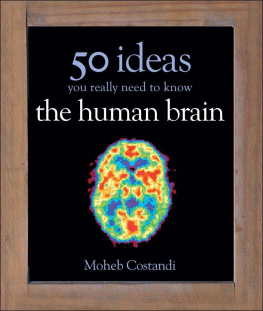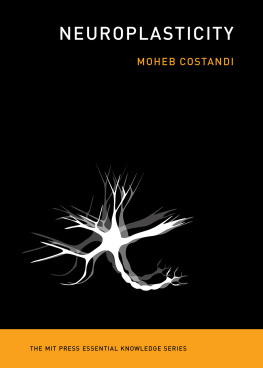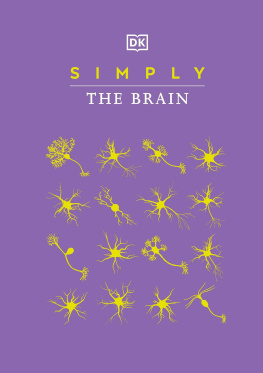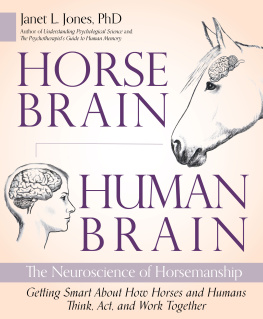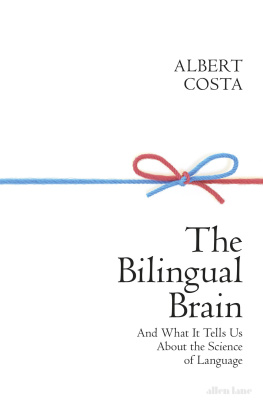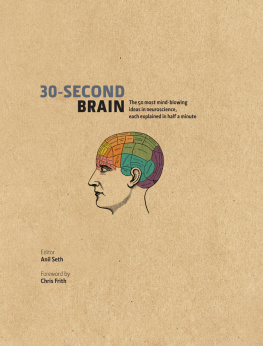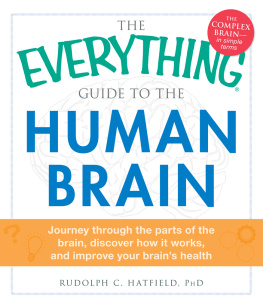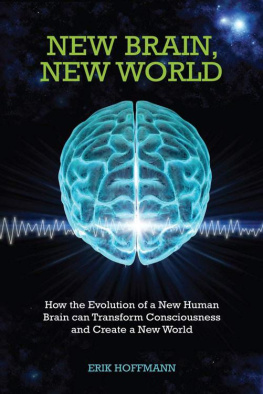Moheb Costandi - 50 Human Brain Ideas You Really Need to Know
Here you can read online Moheb Costandi - 50 Human Brain Ideas You Really Need to Know full text of the book (entire story) in english for free. Download pdf and epub, get meaning, cover and reviews about this ebook. year: 2013, publisher: Quercus, genre: Religion. Description of the work, (preface) as well as reviews are available. Best literature library LitArk.com created for fans of good reading and offers a wide selection of genres:
Romance novel
Science fiction
Adventure
Detective
Science
History
Home and family
Prose
Art
Politics
Computer
Non-fiction
Religion
Business
Children
Humor
Choose a favorite category and find really read worthwhile books. Enjoy immersion in the world of imagination, feel the emotions of the characters or learn something new for yourself, make an fascinating discovery.
- Book:50 Human Brain Ideas You Really Need to Know
- Author:
- Publisher:Quercus
- Genre:
- Year:2013
- Rating:5 / 5
- Favourites:Add to favourites
- Your mark:
- 100
- 1
- 2
- 3
- 4
- 5
50 Human Brain Ideas You Really Need to Know: summary, description and annotation
We offer to read an annotation, description, summary or preface (depends on what the author of the book "50 Human Brain Ideas You Really Need to Know" wrote himself). If you haven't found the necessary information about the book — write in the comments, we will try to find it.
50 Human Brain Ideas You Really Need to Know — read online for free the complete book (whole text) full work
Below is the text of the book, divided by pages. System saving the place of the last page read, allows you to conveniently read the book "50 Human Brain Ideas You Really Need to Know" online for free, without having to search again every time where you left off. Put a bookmark, and you can go to the page where you finished reading at any time.
Font size:
Interval:
Bookmark:
ideas
you really need to know
the human brain
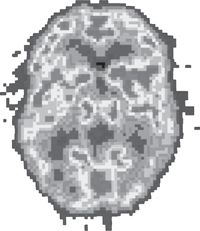
Moheb Costandi

First published in 2013
This ebook edition published in 2013 by
Quercus Editions Ltd
55 Baker Street
7th Floor, South Block
London
W1U 8EW
Copyright 2013 Moheb Costandi
The moral right of Moheb Costandi to be identified as the author of this work has been asserted in accordance with the Copyright, Design and Patents Act, 1988.
All rights reserved. No part of this publication may be reproduced, stored in a retrieval system, or transmitted in any form or by any means, electronic, mechanical, photocopying, recording, or otherwise, without the prior permission in writing of the copyright owner and publisher.
The picture credits constitute an extension to this copyright notice.
Every effort has been made to contact copyright holders. However, the publishers will be glad to rectify in future editions any inadvertent omissions brought to their attention.
Quercus Editions Ltd hereby exclude all liability to the extent permitted by law for any errors or omissions in this book and for any loss, damage or expense (whether direct or indirect) suffered by a third party relying on any information contained in this book.
A catalogue record of this book is available from the British Library
eBook ISBN 978 1 78206 252 3
Print ISBN 978 1 78087 910 9
You can find this and many other great books at:
www.quercusbooks.co.uk
All illustrations by Patrick Nugent except p.34 Natural History Museum, London/Science Photo Library
Contents
STRUCTURE AND FUNCTION OF THE NERVOUS SYSTEM
YOUR BRAIN, YOUR SELF
THOUGHT PROCESSES
THE DYNAMIC BRAIN
BREAKING FROM DOGMA
EMERGING TECHNOLOGIES AND CHALLENGES
Introduction
Modern neuroscience can be traced back to the 1890s, when researchers first determined that the nervous system, like all other living things, is made of cells. Fast-forward a century: President George W. Bush declared the 1990s the Decade of the Brain, and since then research into the workings of this extremely complex organ has accelerated at an astonishing pace. Some say that we have learned more about the brain in the past decade than we did in the hundred years preceding it. Even so, we are only just beginning to scratch the surface, and a huge amount remains to be discovered.
During this short time, many theories about how the brain works, and how it generates our thought and behaviours, have been put forward. Some of the earlier ideas, such as phrenology the 19th-century discipline that tried to correlate personality traits with the shape of the head became influential in their time but were eventually debunked as pseudo-science. Others, such as the neuron doctrine the idea that the brain is made of cells remain central to modern neuroscience.
As technology advances and our understanding of the brain improves, the general public has become increasingly interested in neuroscience and in what these exciting new findings mean for them. At the same time, there is a great deal of sensationalism surrounding brain research, not to mention much inaccurate reporting.
Likewise, myths about the brain abound, and some of the more popular examples such as the idea that the left brain is logical and the right brain creative seem to be gaining traction, especially within education and the business sector.
This book is an attempt to distil over 100 years of thinking about the brain. It draws together influential ideas in neuroscience, updating old concepts in the light of new evidence, as well as introducing others that have emerged only recently. It attempts to explain these ideas accurately, and in a way that is easily digestible; to separate the wheat from the chaff; and to demystify the mysterious matter inside our heads. Where possible, I discuss how the science is carried out the techniques used, and how researchers refine their ideas as new evidence emerges.
Some believe that gaining a better understanding of how the brain works will provide answers to lifes big questions. It will not: brain research cannot tell us everything about ourselves, or what it means to be human. But it does offer the possibility that treatments may be developed for numerous debilitating conditions that afflict us, such as addiction, Alzheimers disease, stroke and paralysis. 50 Human Brain Ideas You Really Need to Know addresses these hopes, too, with cautious optimism.
The nervous system
The nervous system consists of two main components. One part, the central nervous system made up of the brain and spinal cord receives information from, and integrates the activity of, the rest of the body. The other section, the peripheral nervous system, contains nerves that send and receive information to and from the body.
The human brain contains hundreds of billions of cells arranged in a highly organized fashion, and is often said to be the most complex structure in the known universe yet it weighs about only 1.5kg (just over 3lb). It consists of two hemispheres, each of which controls, and receives information from, the opposite side of the body. The cerebral cortex covering each hemisphere is divided into four specialized lobes; these all perform different functions, and are separated from one another by deep grooves called fissures.
- The frontal lobe performs complex mental functions such as reasoning and decision-making, and also contains the motor areas, which plan and execute voluntary movements.
- The parietal lobe contains the somatosensory areas, the parts that process touch information from the body. It also integrates different types of sensory information for spatial awareness basically, knowledge of how the body is oriented within space.
- The temporal lobe receives information from the ears, and its outer surface contains areas specialized for understanding speech. The inner surface contains the hippocampus, which is critical for memory formation and, with the surrounding areas, plays an important role in spatial navigation.
- The occipital lobe is located at the back of the brain and contains dozens of distinct regions specialized to process and interpret visual information.
The brain uncovered Beneath the cortex lie several large clusters of neurons. The thalamus (or deep chamber) lies right at the brains centre, and relays information from the sense organs to the appropriate region of the brain. Surrounding the thalamus are the basal ganglia, a group of structures involved mainly in the control of voluntary movement. The limbic system is another set of subcortical structures located between the basal ganglia and cortex. Sometimes referred to as the reptilian brain, the limbic system is evolutionarily primitive, and is involved in emotion, reward and motivation. It also includes the hippocampus and amygdala, both of which play a part in memory.
The midbrain is a small area lying at the top of the brain stem. It contains clusters of neurons that control eye movement and is the main source of the neurotransmitter dopamine. Neurons that make dopamine also produce a pigment called melatonin, giving part of the midbrain a black appearance. This part of the midbrain is therefore called the substantia nigra (black substance).
Next pageFont size:
Interval:
Bookmark:
Similar books «50 Human Brain Ideas You Really Need to Know»
Look at similar books to 50 Human Brain Ideas You Really Need to Know. We have selected literature similar in name and meaning in the hope of providing readers with more options to find new, interesting, not yet read works.
Discussion, reviews of the book 50 Human Brain Ideas You Really Need to Know and just readers' own opinions. Leave your comments, write what you think about the work, its meaning or the main characters. Specify what exactly you liked and what you didn't like, and why you think so.

